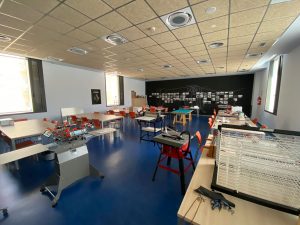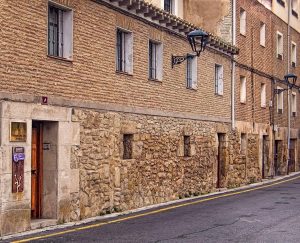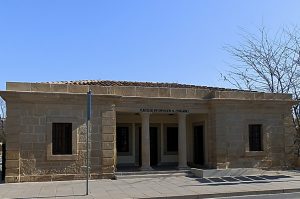
The Promenade of the Prince of Vergara, known familiarly as Paseo del Espolón (Espolón Square) is the most emblematic square in Logroño.
The beautiful gardens that we enjoy today began to take shape in the mid-18th century and constitute one of the most important green areas in the center of Logroño. Among its most representative ornamental elements are the famous monument to General Espartero, La Concha del Auditorio and the monument Tribute to the Victims of Terrorism, artwork of the Basque sculptor Agustín Ibarrola.
History of El Espolón de Logroño
The most emblematic square of the city began to be configured in 1757 as a public walk outside the walls that protected the city. In 1809 it was expanded into orchard lands belonging to the Seminary, located at that time in what is now the Government Delegation.
The so-called Walk of Delights or Walk Outside the Walls it was later called Promenade of the Kings, after its remodeling in 1856, when it was decided to place six stone statues representing as many monarchs, sculptures given to the city by General Espartero. These statues would remain on the promenade until the proclamation of the Second Republic, in 1931.
As a result of the construction of the monument to General Espartero, it was determined to name him Promenade of the Prince of Vergara, a denomination that has remained to this day.
In the 20th century, the Espolón underwent two major renovations, one in the 1940s and 1950s —during which unique elements such as La Rosaleda were incorporated, with the ponds of the little frogs.La Concha was also added and the large central fountain that adorns the equestrian statue of Espartero. The adjacent streets was pedestrianized and the promenade was provided with a larger green area and lighting in 1998, in addition to undertaking the necessary works sanitation and renovation of the pavement.
Monument to Espartero
The most recognized element of this square is the equestrian statue of General Espartero, which is still standing in the center of the Espolón. It was the work of the architect Luis y Tomás and materially realized by the sculptor Pablo Gibert.
Its construction lasted for years, mainly due to financing problems, until it was finally inaugurated in 1872.
The statue and the four lions that complete the monumental complex were cast with bronze from cannons. The fountain that currently surrounds the equestrian statue was built in the early 1960s.
The Shell of El Espolón
This auditorium in the shape of a big seashell came to occupy the place of the old music kiosk in 1954, the work of the architect Luis Barrón. It was built following the model of another musical stage that had been installed a short time before in the North American city of San Francisco.
The decorative motifs that La Concha wears in its highest part are the work of the sculptor Lucarini, who is also the author of the little frogs installed in the ponds of the Rosaleda.
The back of the Concha, shaped like a pergola, was occupied for years by several shops of great tradition in the city and was also used as a Tourist Office.
Calle Miguel Villanueva. 26001 Logroño.



